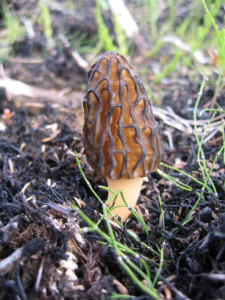I spent some time over the past week looking into how we can all contribute to fungi conservation- since fungal conservation doesn’t get as much attention as plant and animal conservation, there aren’t as many international organizations or projects that are seeking support. Instead, it seems like smaller, more local groups are more prevalent. And it’s clear that a big part of these efforts is helping people learn how to identify fungi. This means there are a number of opportunities to get yourself outside in your local ecosystems and then start recording what you see.
If you are looking for information on healthy soils and promoting below-ground fungal diversity, there are a number of reports and sites with suggestions:
- The USDA has a digital library with a variety of reports, including “Managing Conservation Tillage” and “Introduction to Microbiotic Crusts”
- The Chicago Botanic Garden has tips for your yard
- FantasticFungi has information on soil health, plus they are putting together a documentary on the importance of fungi at multiple levels
If you want to learn how to identify the fungi around you,
- The Missouri Dept. of Conservation has a page on local mushrooms
- The Puget Sound Mycological Society hosts a wild mushroom show, classes, and field trips
- You can find a whole list of local fungi groups in the US and Canada, some of which are more interested in culinary species, some of which are more interested in mapping local populations, at the North American Mycological Association, plus there are forays and events across the US
- In the UK, check out the Association of British Fungus Groups
Once you know what you are looking at, a number of groups want your data:
- The British Mycological Society has a recording network
- Falkland Islands Conservation has a Lower Plants and Lichen Project
- Alberta Parks wants records of Plants, Lichen, and Fungi
- In Australia, Fungimap wants observations
- The Royal Botanic Gardens at Kew has a Lost and Found Fungi Project with targeted surveys
And you can check out the status of fungi conservation in your country with the International Society for Fungal Conservation.
A lot of this entails putting effort into fungi identification, and that can take time- but, in return, you get time spent outside, a connection to other fungi enthusiasts, and a better sense of the diversity around you- it seems like a win-win!

